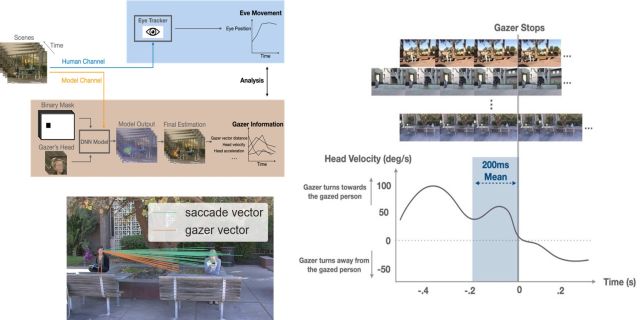New eLife paper by Nicole Han uncovers inferential eye movements during gaze following
A new paper in ElIfe by recent lab Ph.D. Nicole Han characterizes the inferential and functional nature of social attention’s fine-grain eye movement dynamics.

Attending to other people’s gaze is evolutionary important to make inferences about intentions and actions. Gaze influences covert attention and triggers eye movements. However, we know little about how the brain controls the fine-grain dynamics of eye movements during gaze following. In Nicole's new eLife paper, observers followed people’s gaze shifts in videos during search and Nicole related the observer eye movement dynamics to the time course of gazer head movements extracted by a deep neural network. She showed that the observers’ brains use information in the visual periphery to execute predictive saccades that anticipate the information in the gazer’s head direction by 190–350ms. The brain simultaneously monitors moment-to-moment changes in the gazer’s head velocity to dynamically alter eye movements and re-fixate the gazer (reverse saccades) when the head accelerates before the initiation of the first forward gaze-following saccade. Using saccade-contingent manipulations of the videos, she experimentally showed that the reverse saccades are planned concurrently with the first forward gaze-following saccade and have a functional role in reducing subsequent errors fixating on the gaze goal. Together, her findings characterize the inferential and functional nature of social attention’s fine-grain eye movement dynamics. Given that attending to the gaze of others is an integral part of a normal functioning social attention system, Nicole's findings might provide new granular analyses of eye movement control to assess groups with social attention deficits for which simpler gaze-following analyses have shown disparate results.